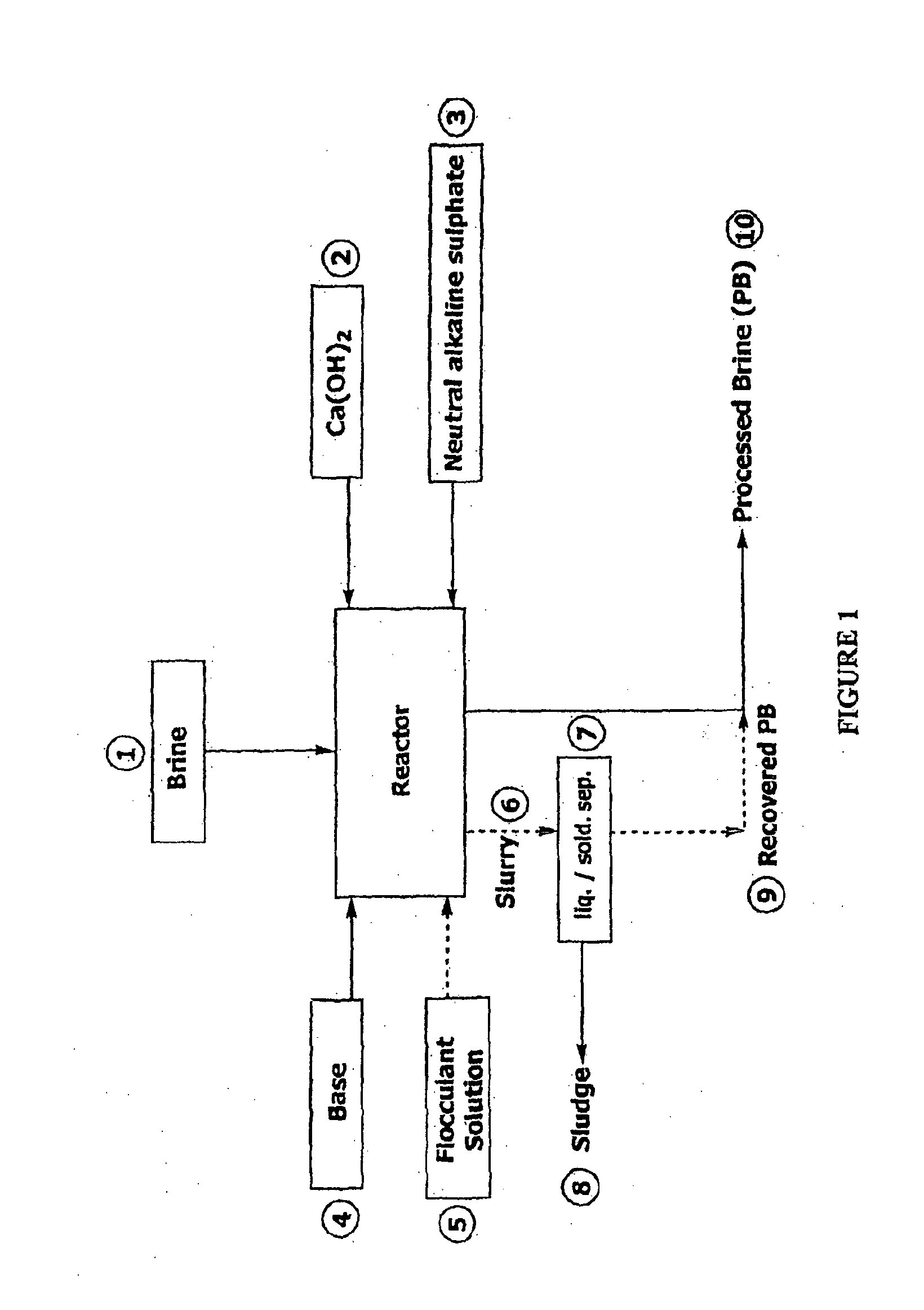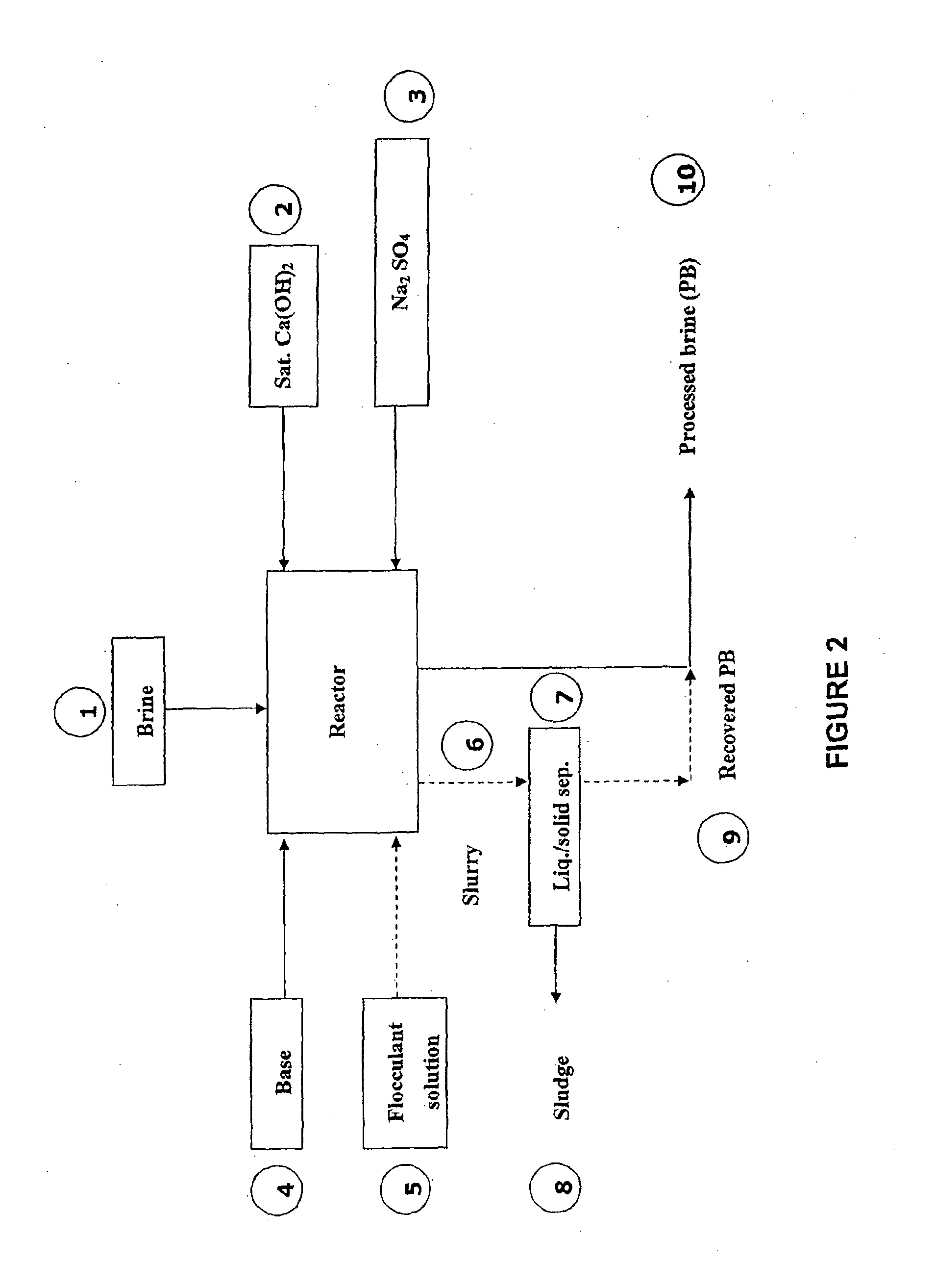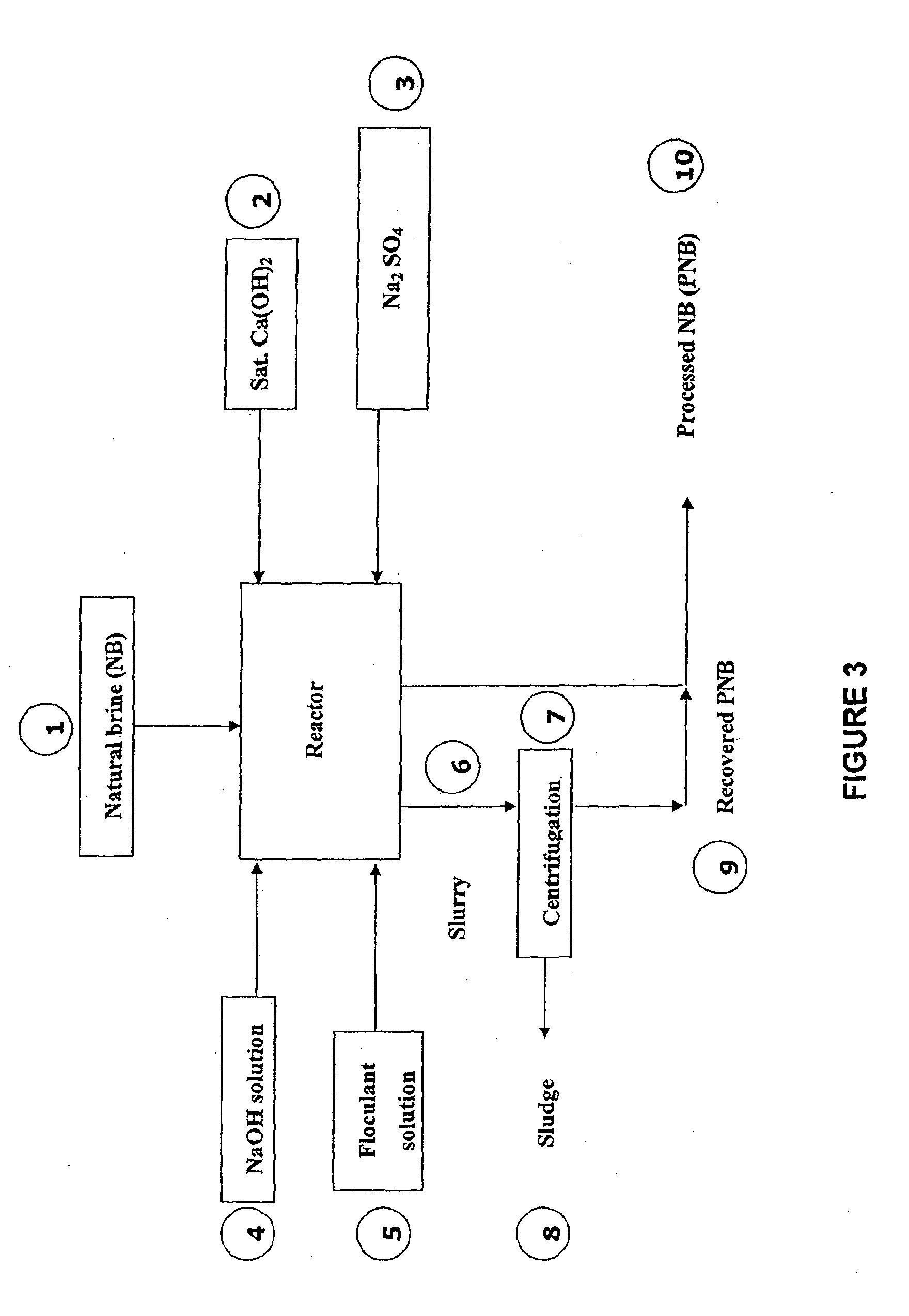Process for recovering lithium from a brine
a technology of lithium brine and recovery method, which is applied in the field of recovering lithium from brine, can solve the problems of difficult and expensive production of lithium salts with low sodium levels, affecting the quality of lithium salts,
- Summary
- Abstract
- Description
- Claims
- Application Information
AI Technical Summary
Benefits of technology
Problems solved by technology
Method used
Image
Examples
example 1
Preparation of a Mixture of Calcium Hydroxide and Natural Brine Solution (Ca(OH)2) 75 Kg / m3 of NB)
[0343]To a natural brine solution (184.6 dm3), 13.846 Kg of slaked lime (Ca(OH)2) was added. The resulting mixture was agitated to form a suspension of calcium hydroxide in natural brine (75 Kg / m3 of natural brine).
example 2
Preparation of Sodium Sulphate (Na2SO4) solution, 233 Kg / m3
[0344]To fresh water (46.154 dm3), 10.789 Kg of solid sodium sulphate (Na2SO4) was added, with the solution being heated by applying a stream of steam (3-4 Kg / cm3, 0.75 Kg) to produce a sodium sulphate solution (233 Kg / m3 of fresh water).
example 3
Preparation of a Sodium Hydroxide (NaOH) Solution, 49 Kg / m3 of NB
[0345]To a natural brine solution (30.8 dm3), 1.538 Kg of solid sodium hydroxide (NaOH) was added and dissolved to form a sodium hydroxide solution (in brine)(49 Kg / m3 of natural brine).
PUM
| Property | Measurement | Unit |
|---|---|---|
| concentration | aaaaa | aaaaa |
| concentration | aaaaa | aaaaa |
| concentration | aaaaa | aaaaa |
Abstract
Description
Claims
Application Information
 Login to View More
Login to View More - R&D
- Intellectual Property
- Life Sciences
- Materials
- Tech Scout
- Unparalleled Data Quality
- Higher Quality Content
- 60% Fewer Hallucinations
Browse by: Latest US Patents, China's latest patents, Technical Efficacy Thesaurus, Application Domain, Technology Topic, Popular Technical Reports.
© 2025 PatSnap. All rights reserved.Legal|Privacy policy|Modern Slavery Act Transparency Statement|Sitemap|About US| Contact US: help@patsnap.com



